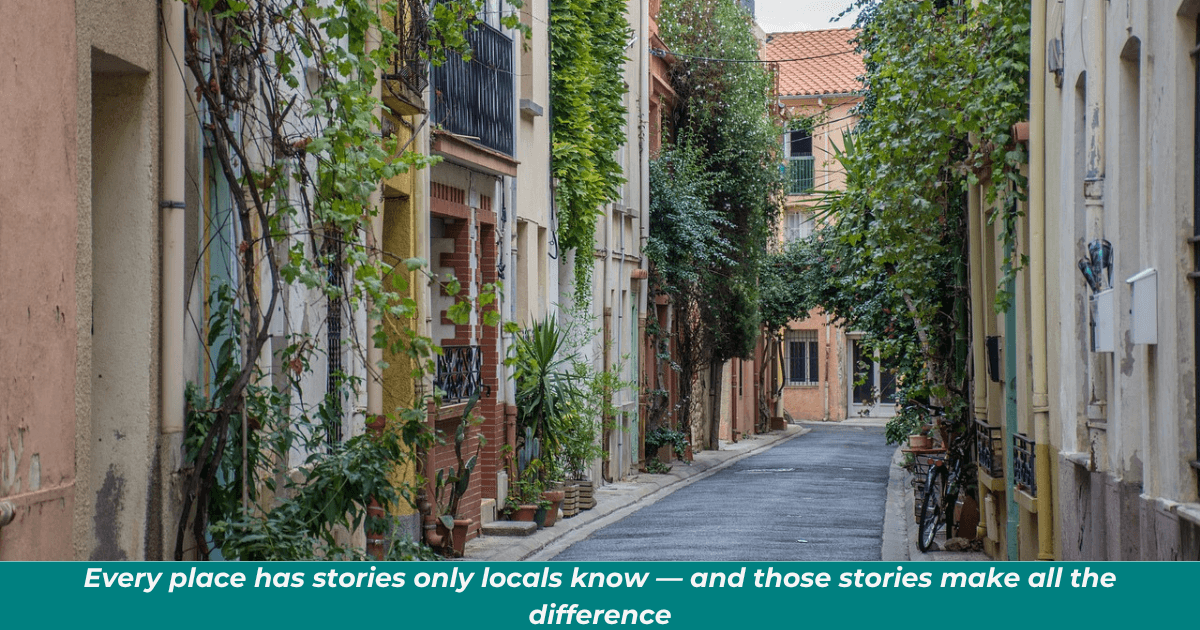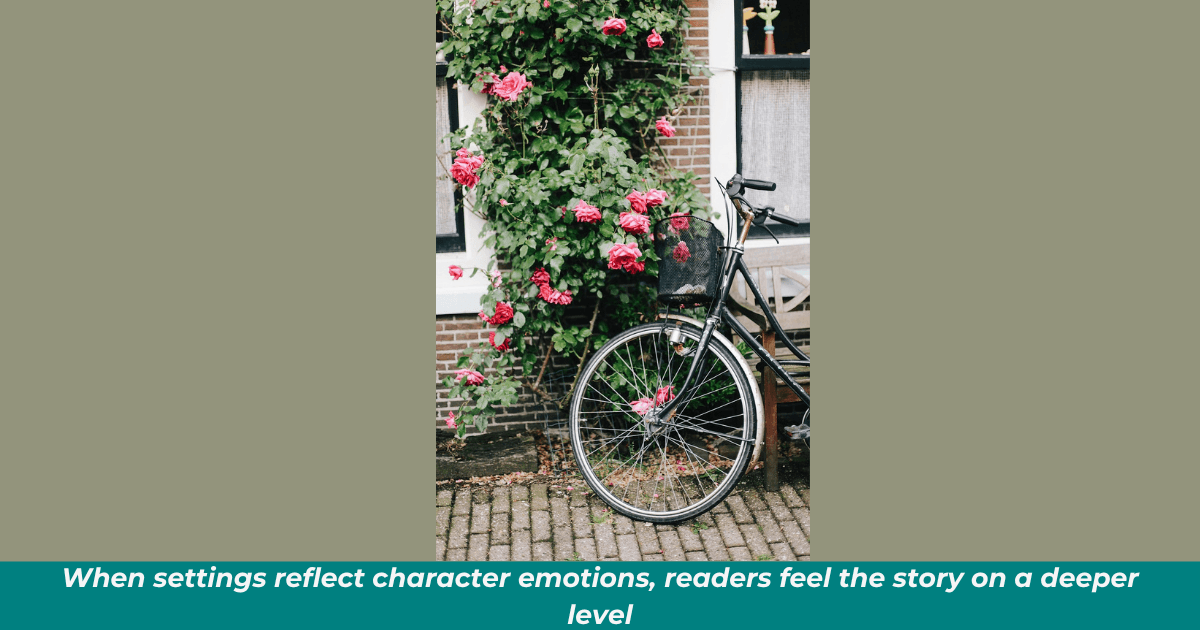
How I Write Believable Settings
Creating Worlds Readers Can See, Smell, and Feel

4-part “Believability” series
Part 3

July 16, 2025 | 8-minute read
We’ve covered believable characters and authentic dialogue — now let’s talk about the third crucial element that makes fiction feel real: settings that transport readers completely into your story world.
A believable setting does more than just provide a backdrop for your characters’ actions. It becomes a living, breathing part of the story that influences mood, reflects character emotions, and creates an immersive experience that makes readers forget they’re reading fiction.
But how do you create settings so vivid and authentic that readers feel like they’ve actually been there?
It starts with the same principle I use for characters and dialogue: grounding fiction in reality.
The Foundation: Extensive Research

Just like I create detailed biographies for my characters, I research my settings extensively.
Whether I’m writing about a small town in Georgia or a bustling neighborhood in New York City, I need to know that place intimately before I can write about it convincingly.
This research goes far beyond just knowing the general geography.
I need to understand the local culture, the climate throughout different seasons, the economic conditions, the social dynamics, and all the little details that make a place unique.
When I Can’t Visit in Person
Obviously, I can’t travel to every location I write about, but technology has made virtual exploration incredibly detailed.
Google Maps and Street View allow me to “walk” through neighborhoods, see what buildings actually look like, and notice details like street signs, architectural styles, and local businesses.
But visual research is just the beginning.
Spending time reading local newspapers online, browsing area social media groups, and studying local government websites to understand current issues, community concerns, and regional personality are more ways of immersing yourself.
I also look for travel blogs, local lifestyle websites, and area magazines that give me insight into what people who actually live there think about their community.
The Power of Local Expertise

Just like I reach out to people for authentic dialogue help, I connect with locals when I’m writing about specific places.
People who actually live somewhere know details that no amount of internet research can provide.
They know which restaurants locals actually frequent versus tourist traps. They understand the unspoken social hierarchies and neighborhood dynamics.
They can tell me what the air smells like after a summer rain, which streets to avoid during rush hour, and what the town really thinks about that new development everyone’s talking about.
The Enthusiasm of Hometown Pride
I’ve discovered that people love sharing knowledge about their hometowns.
When I tell someone I’m researching their area for a novel, they become incredibly helpful. They’ll recommend specific locations, share local legends or history, and often provide details I never would have thought to ask about.
These conversations frequently lead to story elements I hadn’t planned.
A local might mention a charming tradition, an interesting historical event, or a unique geographic feature that becomes important to my plot.
As with my dialogue research, I always offer to include helpful locals on my acknowledgments page, and everyone accepts. They enjoy being part of the creative process.
Beyond the Visual: Engaging All Senses
One mistake many writers make is focusing only on how a place looks. But believable settings engage all five senses.
Readers need to know how a location sounds, smells, and feels — not just its visual appearance.
Each sense contributes to the overall atmosphere and helps readers feel genuinely present in the scene.
Sound Creates Atmosphere
Urban settings have traffic noise, construction sounds, street vendors calling, and the general hum of city life.
Rural areas might feature birdsong, rustling leaves, distant farm equipment, or the silence that city dwellers find unsettling.
Coastal areas have crashing waves, seagull cries, and the constant background of wind.
Mountain locations offer different sounds entirely — perhaps the echo that comes with altitude or the specific quiet of snow-covered landscapes.
Scent Triggers Memory
Smell is incredibly powerful for creating emotional connection to place.
The salt air of an ocean town, the pine scent of mountain forests, the mixture of exhaust and street food in urban areas — these sensory details make settings memorable and real.
Different seasons bring different scents to the same location.
Spring flowers, summer heat and pavement, autumn leaves, winter’s crisp emptiness — these changes help establish not just where your story takes place, but when.
Touch and Temperature Matter
How does the air feel in your setting? Is it humid and heavy, dry and thin, cold enough to see your breath, or so hot that clothing sticks to skin?
These physical sensations help readers feel present in the scene.
Textures matter too — the rough bark of trees, smooth river stones, gritty urban surfaces, soft sand, or whatever physical elements your characters interact with.
Settings as Character Extensions

The most effective settings do more than just provide a stage for action — they reflect and enhance character emotions and story themes.
A character feeling lonely might notice empty spaces, while someone filled with hope sees potential and beauty in the same location.
This doesn’t mean manipulating reality to fit emotions but rather choosing which real details to emphasize based on your character’s state of mind and your story’s needs.
Weather as Emotional Amplifier
Weather is one of the most powerful tools for enhancing mood without being heavy-handed about it.
A gentle rain can feel romantic or melancholy depending on your characters’ circumstances. Bright sunshine can emphasize joy or feel oppressive to someone dealing with internal darkness.
But here’s the key: The weather needs to be appropriate for your setting and season.
Research actual climate patterns and seasonal variations for your location so your weather choices feel natural rather than contrived.
Historical and Cultural Accuracy
If you’re writing historical fiction or contemporary stories set in unfamiliar cultures, your research needs to go even deeper.
You need to understand not just how places look now but how they looked, sounded, and felt during your story’s time period.
This means researching everything from architecture and transportation to social customs and daily routines. What did people wear? How did they travel? What were their concerns and celebrations?
Avoiding Stereotypes and Assumptions
One of the biggest pitfalls in setting development is relying on stereotypes or assumptions rather than actual research.
Every place is more complex and nuanced than popular culture representations suggest.
Small towns aren’t all the same. Big cities each have distinct personalities. Rural areas vary dramatically based on geography, economy, and local culture. International locations have their own unique characteristics that go far beyond tourist attractions.
The Details That Make It Real
Sometimes it’s the smallest, most specific details that make settings feel authentic.
The particular way light falls through windows at different times of day. The local chain restaurant that exists only in that region. The specific flowers that bloom in local gardens.
These tiny details show readers that you’ve really studied the place you’re writing about, and they create the texture that makes settings memorable.
Creating Setting Reference Materials
Just like I maintain character biographies, I create detailed setting references for each location in my stories.
These include everything from climate and geography to local businesses, cultural details, and seasonal changes.
I also collect visual references — photographs, maps, architectural examples — that help me maintain consistency throughout the writing process.
Making Every Setting Serve the Story
Ultimately, every setting choice should serve your story’s needs.
Beautiful, well-researched settings are wonderful, but they need to enhance rather than distract from your plot and character development.
This means choosing locations that provide the right opportunities for your characters to grow, conflict to develop, and themes to emerge naturally.
The goal is settings so immersive and authentic that readers feel like they’ve visited these places themselves — and so integral to the story that the plot couldn’t happen anywhere else.
How do you approach setting research and development? Do you have favorite techniques for making fictional locations feel real?
Share your setting-writing strategies in the comments — I love learning how other writers bring their story worlds to life!
Related Topics: setting development, location research, world building, immersive writing, sensory details, setting research methods, fictional locations, writing craft, authentic settings, story atmosphere
NOTE: Remember the inaugural “BBA’s Christmas Romance Reviews” of 2024? Well, get ready for “BBA’s Christmas in July” — a special review series starting Monday, July 21!
It’s going to be five days of Christmas romance movies as we move into the second half of 2025 and near our favorite time of the year. Can’t wait to see you there.
All images courtesy of Pixabay artists: James Wheeler (post image), Gavin Seim (SEO image), u_1r3iga0g0h (girl researching), hjrivas (European street), and Daria Obymaha (Amsterdam bike).

Alicia Strickland
Hi! I write across multiple genres under various pen names. But for nonfiction, I write as myself. As a designer with a love of Old Hollywood and all things creative, I bring diverse perspectives to my storytelling... and to my blog. In the unlikely event that I’m not writing, I enjoy crafting, gardening, or spending time with my flame-point Siamese, Hunter.
Want to stay updated? Sign up for my newsletter(below 👇) to receive exclusive content and be the first to hear about new releases!
YOU MIGHT LIKE

Jan 08, 2025
Jan 08, 2025
POPULAR POSTS
By Alicia Strickland on February 14, 2025
By Alicia Strickland
Jan. 05, 2025
REVIEWS

Jan 15, 2025
Dec 29, 2024
Jan 20, 2025
Feb 14, 2025

Crafting passionate tales for adult hearts and creating magical worlds for young minds!
Stay in touch!
Click “subscribe” to get weekly newsletter updates on all BBA news and books.
©️ 2025 booksbyalicia.com
